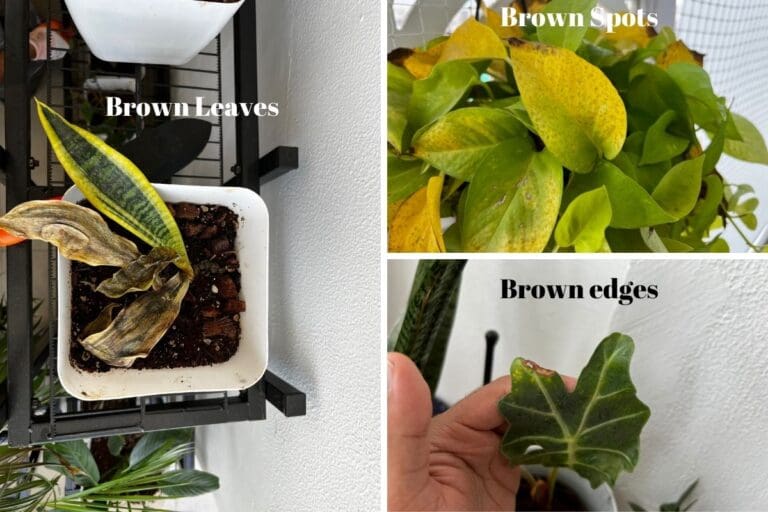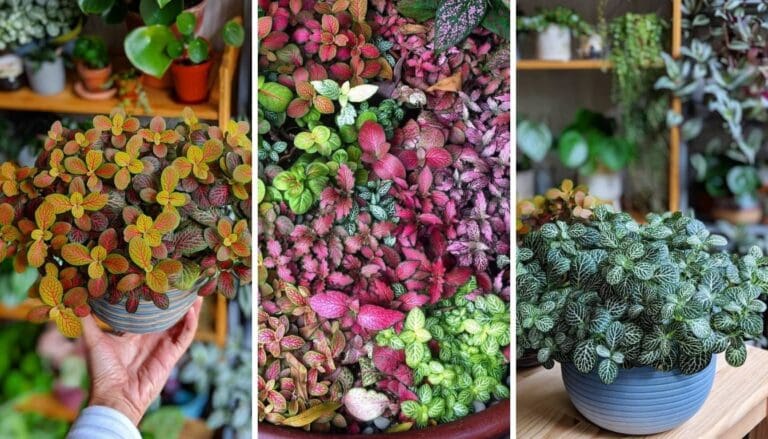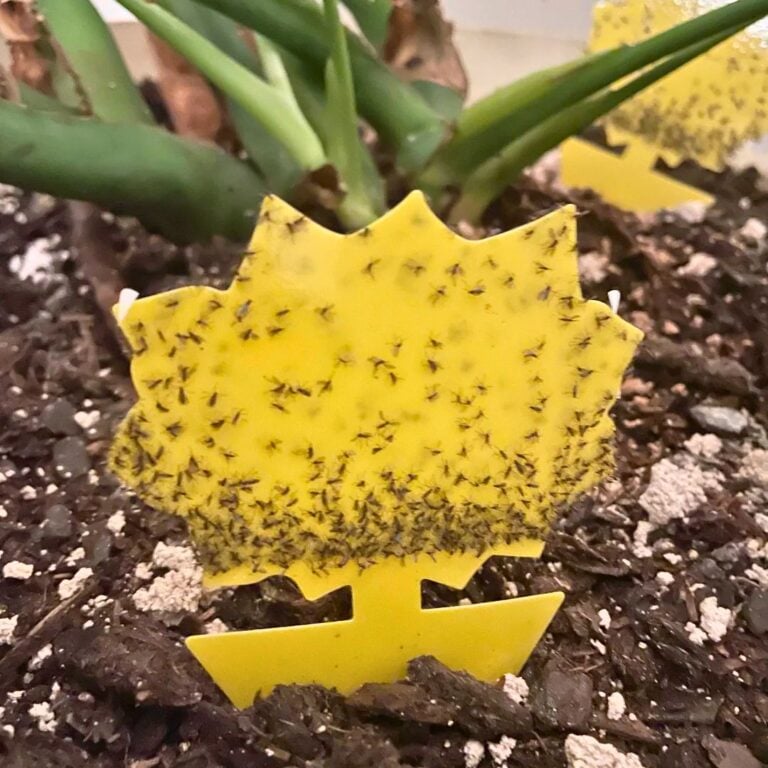6 Signs of Root Rot in Houseplants to Watch for This Summer and How to Spot Them Early
I love keeping houseplants, but honestly, they need a bit of extra attention—especially during the summer. Warm weather just seems to make root rot more likely if I’m not careful with watering.
Knowing the signs of root rot helps me save my plants before things get out of hand. That way, I can keep my indoor garden thriving all season.
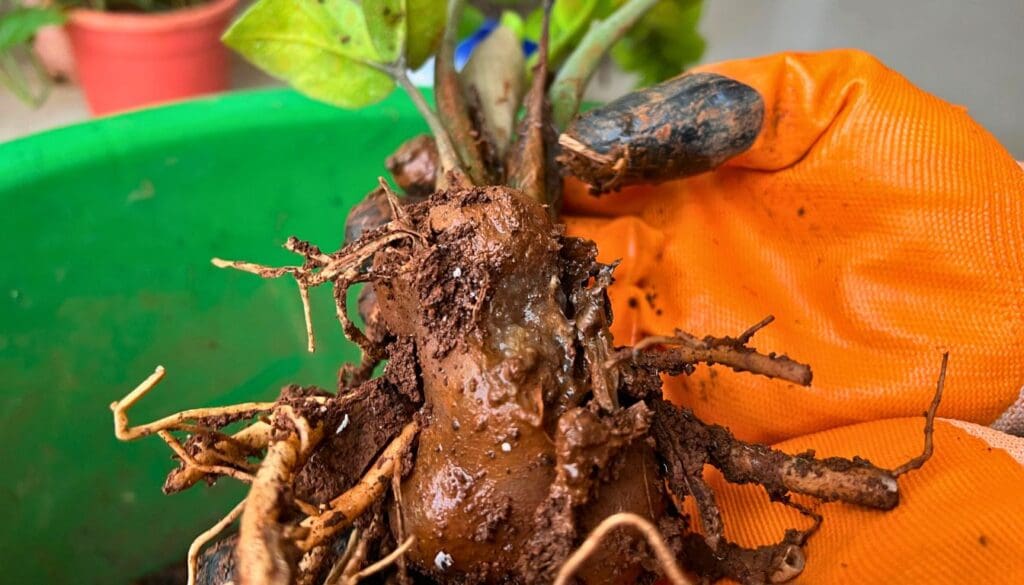
Please note: Simplify Plants is reader-supported. As an Amazon Associate, I earn from qualifying purchases made by our readers with no extra cost added to you all! Some links in the post are affiliate links and I get a commission from purchases made through links in the post.
1) Yellowing and wilting leaves
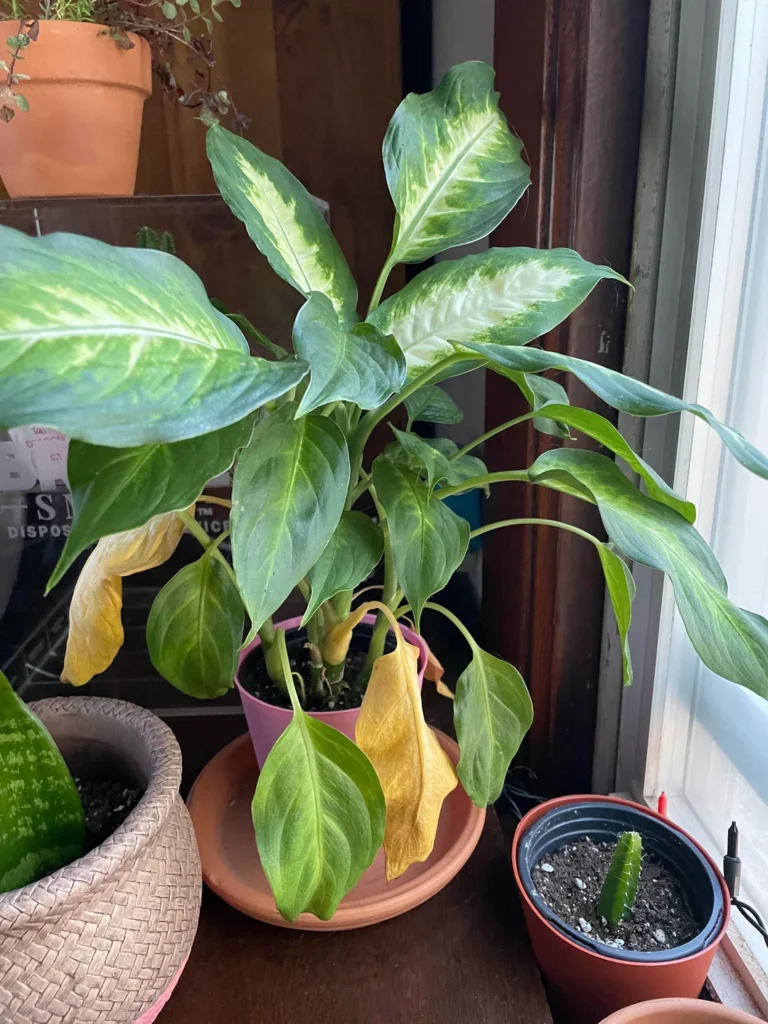
One big sign I always notice when my plants are struggling is yellowing leaves. The green fades, and leaves can look patchy or pale.
This usually starts at the bottom and creeps upward. Wilting is another clue. Even after watering, the plant might look droopy and sad.
That’s not normal—healthy leaves should stand up and feel firm. Sometimes, yellow leaves drop off with just a light touch.
When this happens, I check the soil. If it’s soggy or smells weird, root rot could be the culprit.
I always keep an eye out for both yellowing and wilting at the same time. These signs usually pop up before you see anything wrong above the soil.
The sooner I notice, the better chance I have to help my plant bounce back. If leaves change color and wilt together, I act fast—checking the roots, trimming damaged spots, and making sure my plant isn’t swimming in water. Early action really matters.
2) Mushy, darkened roots when inspected

If I pull a houseplant out of its pot and see roots that are dark brown or black, that’s a huge red flag. Healthy roots should look white or maybe light tan.
When roots turn dark, it usually means they’re dying from too much moisture. Mushy roots feel soft and slimy instead of firm.
If I touch them, they might break apart or even smell bad. That squishy texture? It means the roots can’t feed the plant properly.
Root rot often starts at the tips and spreads. If I catch it early, I’ll trim away the dark, mushy parts.
Clean scissors are a must—you don’t want to make things worse. Sometimes, the whole root ball feels soggy, and I know root rot can move quickly if the soil never dries out.
I always check for proper drainage in my pots to help keep this from happening. Inspecting roots now and then is easy and can really help me spot trouble before it gets worse.
If I see mushy, dark roots, I don’t wait around. Catching root rot early is the best shot my houseplants have.
3) Foul, sour smell from the soil

When I water my houseplants, I’ll check for any weird smells coming from the soil. A bad smell, especially if it’s sour or rotten, is a big warning sign.
Healthy soil smells earthy, kind of like after a rainstorm. If I catch a strong, unpleasant scent, I know something’s up.
This smell usually means the roots are rotting. Bacteria and fungi love wet soil, and they make the smell even worse.
If the potting mix stays soggy, the roots can’t breathe. When I notice this, I check if the pot drains well.
Sometimes, water just sits at the bottom and never dries out, letting the sour smell build up. I always pull the plant out of the pot if the smell sticks around.
I look for mushy or black spots on the roots. If I catch it early, I can clean things up and maybe save my plant.
A strong, sour smell from the soil is never something to ignore. It almost always means my plant needs attention—fast.
4) Leaves dropping prematurely

One thing I keep an eye on is when my houseplant leaves start falling off too early. Normally, plants lose old leaves here and there, but with root rot, even new, healthy-looking leaves can drop suddenly.
When I see green leaves dropping, it’s a pretty clear sign something’s wrong. Healthy plants want to hold onto their leaves.
If I notice a sudden mess of leaves around my plant, it’s time to check the roots. Root rot messes with a plant’s ability to soak up water and nutrients.
The plant gets stressed and starts shedding leaves to survive. Sometimes, it’s just the bottom leaves, but if things get worse, the leaf loss can spread fast.
I never brush off this sign, even if the rest of the plant looks fine. If leaves are dropping, I carefully lift the plant out and check the roots for mushiness or any bad smells.
5) Stunted or no new growth

Sometimes I notice my houseplant just isn’t growing, even though it’s summer and everything else seems right. When roots are damaged by root rot, the plant can’t take up water or nutrients like it should.
If my plant’s new leaves are tiny or just not showing up, it’s probably a sign something’s off. Healthy roots help plants shoot up fast in summer.
Sick roots mean growth slows or just stops. I’ll look for buds or new shoots during the warm months.
If nothing’s happening for weeks, I start to worry about root rot. Even if the leaves look okay, no new growth is a warning.
Sometimes the plant just looks stuck. It isn’t getting taller or bushier, and the old leaves just sit there.
If I see this, I’ll check the roots, just in case. It’s normal for plants to chill in winter, but summer should be a time of active growth.
If my plant stays the same size after weeks of care, root rot might be to blame.
6) Soil that stays constantly wet

I always poke at the soil before I water my plants. If the soil is still wet days after watering, that’s a problem.
Houseplant roots need both moisture and air. Too much water means not enough oxygen for the roots.
If I touch the soil and it’s still soggy, I know something’s off. Healthy soil should dry out a bit between waterings.
Constantly wet soil can cause root rot and really hurt my plant. Sometimes, soil stays wet because the pot doesn’t drain well.
A pot without drainage holes just traps water. I always use pots with holes at the bottom.
Watering too often is another reason soil stays wet. I have to remind myself to hold off until the top inch of soil is dry.
It’s honestly better to let the plant dry out a little than to keep it soaked. If I catch a musty smell, that’s a big warning sign.
Smelly, wet soil means something’s wrong below the surface. That’s usually when root rot has already started.
Compacted soil can also hold too much water. I like to loosen the soil every now and then to help it drain better.
This keeps my plant’s roots a lot happier.
Why Root Rot Spreads in Summer
Root rot can sneak up on you fast in the warmer months. I see a couple main reasons why my houseplants are at higher risk for root rot once summer hits.
The Impact of Warm Temperatures
Warm summer temps are just perfect for root rot. When it’s hot, the soil stays warm and bacteria and fungi multiply faster.
These little troublemakers attack plant roots and speed up the damage. I’ve noticed roots break down much quicker if my plants sit in warm, wet soil.
Warmth also makes my houseplants use more water, which sometimes makes me think I should water more.
Here’s what happens in the heat:
| Temperature | Effect on Soil and Roots |
|---|---|
| 65°F – 75°F | Good for most houseplants |
| 76°F+ | Bacteria/fungi multiply fast |
| 85°F+ | Roots weaken, rot increases |
When the weather heats up, I keep a close eye on my houseplants—root rot can spread so quickly.
How Overwatering Becomes More Common
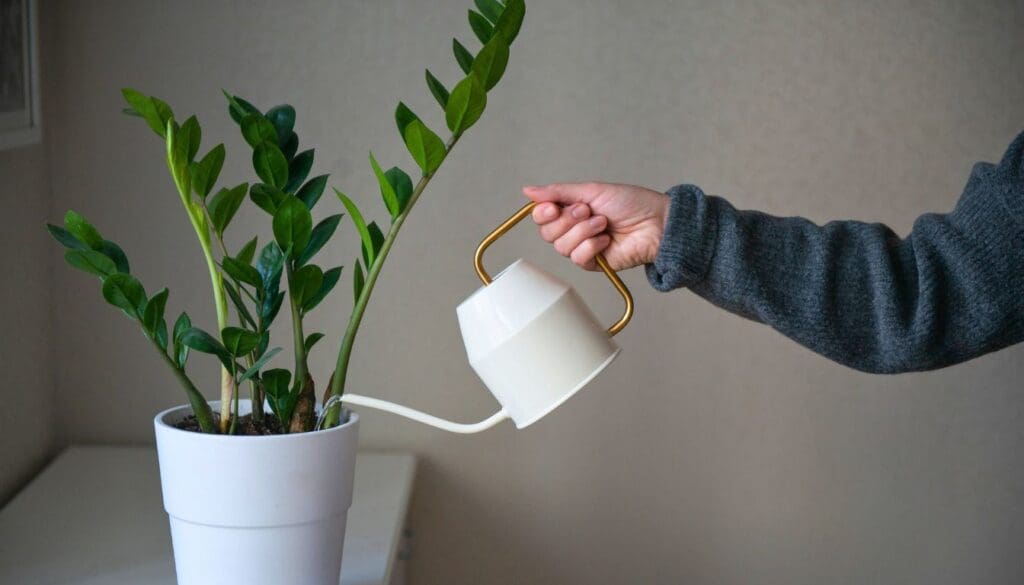
I tend to water my plants more in summer, worried they’ll get thirsty. But extra watering—especially when the heat slows soil drying—means roots can stay soggy way too long.
Roots need air to stay healthy. If I keep the soil too wet, roots get weak and soft.
Soggy soil is where root rot fungi love to hang out. Even if a plant looks wilty from heat, it doesn’t always mean it needs more water.
Signs I check to avoid overwatering:
- Soil feels wet days after watering
- Yellowing leaves
- Mushy roots when I check below the soil
Testing the soil first and using pots with drainage holes really helps me keep rot away in the summer.
How to Protect Your Houseplants From Root Rot
I’ve learned that keeping roots healthy in summer comes down to two things: how I water and how well my soil drains. If I don’t pay attention, my houseplants might end up with root rot before I know it.
Best Watering Practices for Summer
Watering too much is a classic cause of root rot. I always check that the top inch of soil is dry before watering.
If it still feels moist, I wait another day. I use pots with drainage holes so extra water can escape.
Even in hot weather, I avoid soaking the soil. Most indoor plants just want water when the top layer dries out.
I like the “lift test”—if the pot feels light, it’s time to water. If it’s still heavy, I wait.
Consistency is good, but I don’t stick to a strict schedule.
| Tip | What I Do |
|---|---|
| Check soil | Feel with my finger |
| Drainage | Use pots with holes |
| Frequency | Water when needed |
Improving Potting Mix Drainage
Good drainage is just as important as watering. I use a mix with perlite or sand for better airflow.
Heavy, clay soils hold too much water and make root rot more likely. When I repot, I never pack the soil too tightly around the roots.
I tap the pot gently to settle the soil but keep it loose so water can run through. If water sits on top, I rethink my mix.
Adding pebbles or a mesh at the bottom helps keep drainage holes clear. I always make sure water flows out easily after watering.
Roots need air as much as water—can’t forget that.
Frequently Asked Questions
I’ve seen root rot show up in summer when plants get too much water. Signs like yellowing leaves, foul smells, and mushy roots usually mean trouble.
Taking quick action is the best way to help my houseplants recover.
What are the tell-tale signs that my houseplant might be suffering from root rot?
Usually, the first thing I notice is yellowing or wilting leaves. Sometimes, the plant just starts dropping leaves out of nowhere or just… stops growing.
If there’s a weird sour or earthy smell coming from the soil, that’s definitely a red flag. Honestly, if it smells off, it’s probably not a good sign.
Can root rot be resolved without having to repot my plant?
Most of the time, I feel like repotting is needed if you want to save the plant. But if you catch it super early, you might get away with just cutting back on watering and letting the soil dry out.
Still, if the roots are mushy or turning black, repotting really is the safest bet. It’s not fun, but it’s better than losing the whole plant, right?
How can I distinguish between healthy roots and those affected by root rot?
Healthy roots are usually white or light tan, and they feel pretty firm when you touch them. On the other hand, rotting roots tend to be black, brown, or gray.
They’re soft, mushy, and honestly, they might just fall apart in your hand. It’s never a pleasant discovery.
Why do houseplants typically develop root rot during the summer?
In summer, the heat makes plants use water faster, but it’s easy to overwater without realizing it. Warm, damp soil is basically an open invitation for fungus and bacteria.
That combination is exactly when root rot likes to show up. It’s a bit frustrating, isn’t it?
What are some effective fungicide treatments for plants with root rot?
I usually reach for commercial fungicides made for houseplants if things look bad. Sometimes, I’ll try natural options like hydrogen peroxide diluted in water—it can help kill germs in the soil.
Just make sure to check the label and use the right amount for your plant. Better safe than sorry!
What changes might I see in the leaves of a plant that indicate root rot?
Yellowing and wilting are usually the first things I notice. Sometimes the leaves just seem to give up and fall off way earlier than they should.
There are cases where the plant just stops bothering to grow any new leaves at all. If I spot any of these weird changes, I’ll go check the roots as soon as possible—just to be safe.
Recommended Garden Supplies
| Product Image | Our Recommended Gardening Supplies | Check Offers! |
|---|---|---|
Top Top
Top
Top
Top
Top
Top
Top
Top | rePotme Houseplant and Tropical Classic Potting Soil Mix | Check Offer On Amazon |
 Top
Top
Top
Top
Top
Top
Top
Top | Espoma Organic Indoor Plant Food | Check Offer On Amazon |
 Top
Top
Top
Top
Top
Top
Top
Top | GooingTop LED Grow Light 6000K Full Spectrum Clip Plant Growing Lamp | Check Offer On Amazon |
 Top
Top
Top
Top
Top
Top
Top
Top | Soil Moisture Meter | Check Offer On Amazon |
 Top
Top
Top
Top
Top
Top
Top
Top | Govee Hygrometer Thermometer, Bluetooth Enabled! | Check Offer On Amazon |
 Top
Top | LEVOIT Humidifiers for Large Room(Best For Plants) | Check Offer On Amazon |
 Top
Top
Top
Top
Top
Top
Top
Top | Upgraded DIY Automatic Drip Irrigation Kit, 15 Potted Houseplants Support | Check Offer On Amazon |
 Top
Top
Top
Top
Top
Top
Top
Top | Stainless Steel Heavy Duty Gardening Tool Set | Check Offer On Amazon |
 Top
Top
Top
Top
Top
Top
Top
Top | Bonide Insecticidal Soap | Check Offer On Amazon |
 Top
Top
Top
Top
Top
Top
Top
Top | Bonide 32 oz Spray Neem Oil for Organic Gardening | Check Offer On Amazon |
 Top
Top
Top
Top
Top
Top
Top
Top | Garden Safe Fungicide | Check Offer On Amazon |


